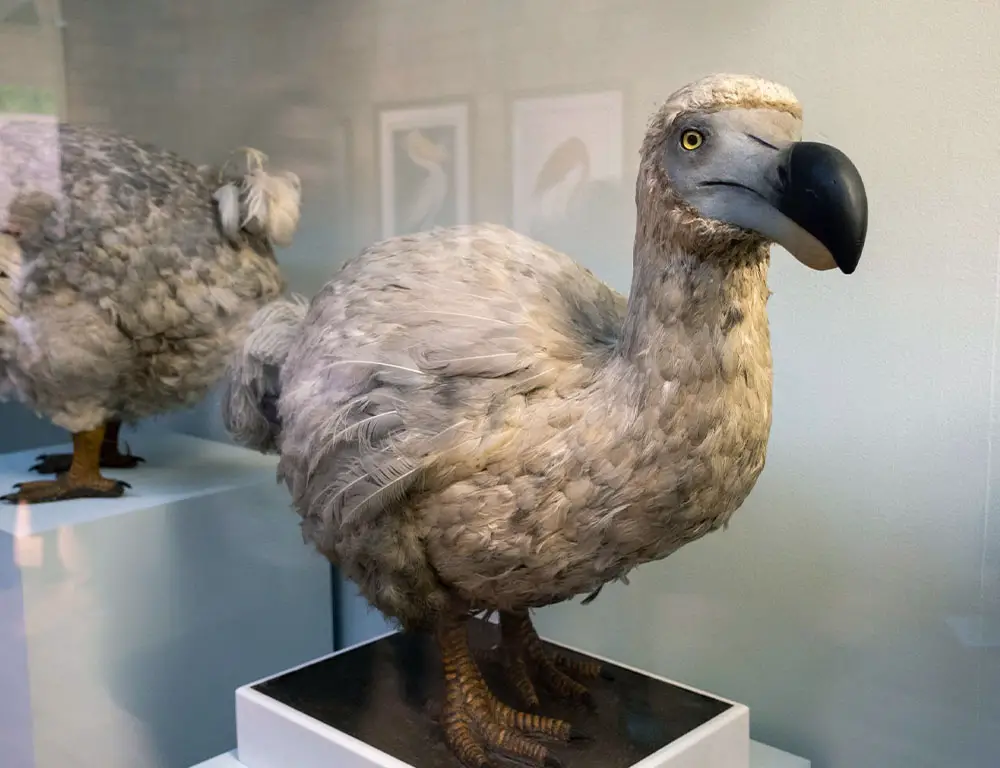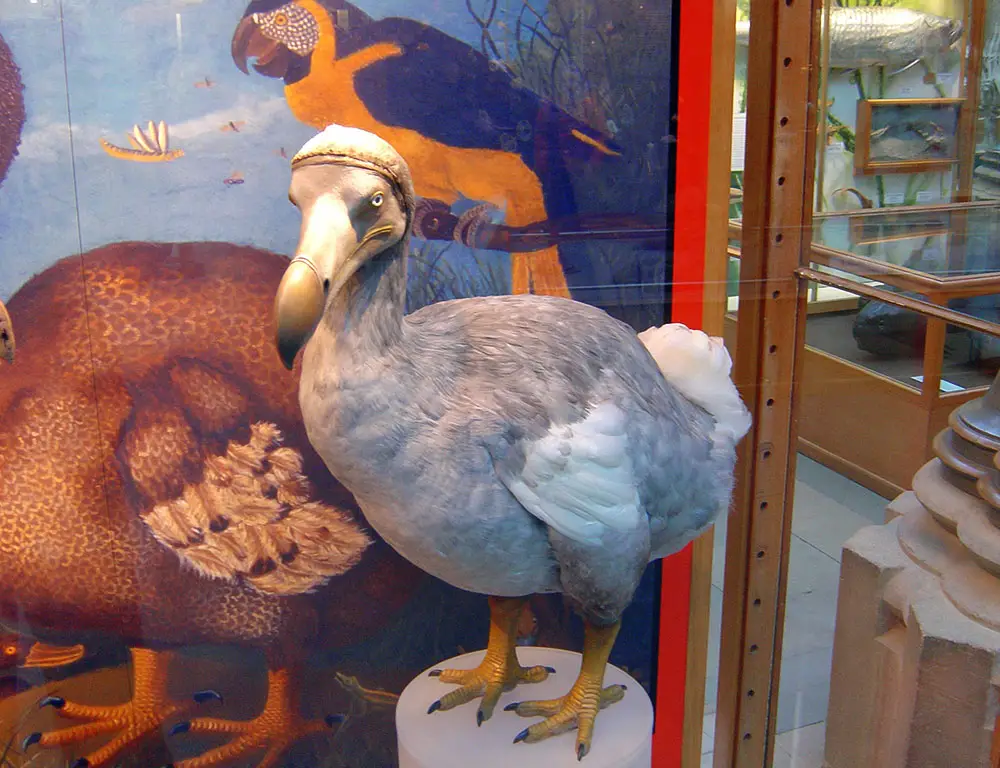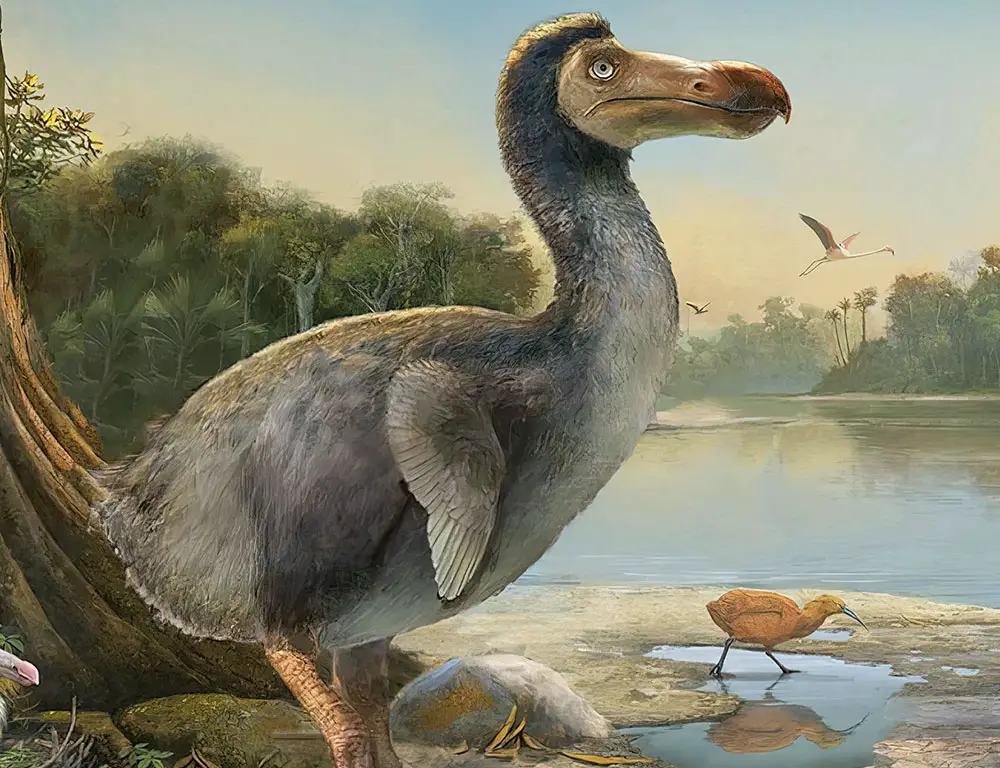Step into the world of the Dodo, a fascinating and enigmatic bird that once roamed the remote island of Mauritius in the Indian Ocean.
Despite its iconic status as a symbol of extinction, the Dodo continues to captivate the imagination of scientists and enthusiasts alike.
The story of the Dodo is one of tragedy and curiosity, marked by its rapid demise following the arrival of humans in Mauritius in the 17th century.
Once abundant and flightless, the Dodo fell victim to habitat destruction, hunting, and predation by introduced species, ultimately leading to its extinction by the late 17th century.
Yet, despite its extinction, the Dodo lives on in the collective consciousness as a poignant reminder of humanity’s impact on the natural world and the importance of conservation efforts.
Join us as we delve into the Dodo’s history, biology, and legacy, unraveling the mysteries surrounding this iconic bird.

Identifying Characteristics of the Dodo
The Dodo, a flightless bird endemic to the island of Mauritius in the Indian Ocean, possessed several distinctive characteristics that set it apart from other avian species. Delve into the unique traits and habits of this iconic bird.
Large Size
The Dodo was a large, heavy bird, standing about three feet tall and weighing up to 50 pounds. Its robust build and bulky appearance were notable features.
Distinctive Beak
The Dodo had a large, hooked beak adapted for eating various foods, including fruits, seeds, and possibly shellfish. Its strong beak enabled it to crack open tough shells to access food.
Short Wings
Despite being flightless, the Dodo retained tiny, vestigial wings, which were incapable of sustained flight. These wings were more akin to flippers and were likely used for balance and display rather than flying.
Stout Legs
The Dodo had stout, muscular legs adapted for walking and foraging on the forest floor. Its powerful legs enabled it to move efficiently through its dense woodland habitat.
Pigeon-like Features
The Dodo was closely related to pigeons and doves, sharing several characteristics such as a rounded body shape, small head, and soft plumage. However, it had a distinctively larger size compared to its pigeon relatives.
Terrestrial Lifestyle
The Dodo was primarily a ground-dwelling bird, inhabiting Mauritius’s forests and coastal areas. It foraged for food on the forest floor, using its strong beak to probe for fruits, seeds, and other edible items.
Social Behavior
Dodos were believed to be social birds, living in small groups or colonies within their island habitat. They likely engaged in social interactions such as mating displays, territorial defense, and communication through vocalizations.
Nesting and Reproduction
Dodos likely constructed simple nests on the ground or in low vegetation, where they laid their eggs. Little is known about their breeding behavior, but they likely exhibited similar nesting habits to other ground-nesting birds.
| Nesting Habit Aspect | Information |
| Nest Location | Likely ground-nesting |
| Nest Material | Possibly built with grass or vegetation |
| Clutch Size | Thought to lay a single egg at a time |
| Incubation Period | Unknown |
| Parental Care | Unknown, but likely cared for chicks after hatching |
Limited Predation
Before humans and other introduced species arrived in Mauritius, the Dodo had few natural predators.
Its lack of flight and isolation on the island meant that it evolved with little threat from predators, making it vulnerable to human exploitation when humans arrived in the 17th century.
Taxonomy, Distribution, and Breeding Habits of the Dodo

The Dodo, a flightless bird native to Mauritius, was a unique and fascinating species with a complex ecological history. Exploring its taxonomy, distribution, and breeding habits provides valuable insights into its evolutionary context and environmental role.
Taxonomy of the Dodo
| Taxonomy Level | Classification |
| Kingdom | Animalia |
| Phylum | Chordata |
| Class | Aves |
| Order | Columbiformes |
| Family | Columbidae |
| Genus | Raphus |
| Species | Raphus cucullatus |
Distribution of the Dodo
The Dodo was endemic to the island of Mauritius in the Indian Ocean, where it inhabited forests, coastal areas, and scrublands. Its distribution was limited to this isolated island, and it did not occur naturally elsewhere.
Breeding Habits of the Dodo
Little is known about the breeding habits of the Dodo, as most information comes from historical records and limited fossil evidence. Dodos is believed to nested on the ground or in low vegetation, laying a single egg per clutch.
Breeding may have occurred year-round, with nesting sites chosen based on habitat availability and suitability.
Diseases and Treatments
Due to the extinction of the Dodo and the limited information available, there is little known about specific diseases that affected the species or any treatments that may have been used.
However, like other birds, the Dodo may have been susceptible to parasitic infections, injuries, and environmental stressors.
What Is the Conservation Status of the Dodo?

The conservation status of the Dodo, a flightless bird endemic to Mauritius, is of particular interest due to its tragic extinction in the 17th century.
Despite being extinct in the wild, the conservation status of the Dodo holds significance as a symbol of human-induced extinction and the importance of preserving biodiversity.
Conservation Status of the Dodo
The Dodo (Raphus cucullatus) is classified as Extinct by the International Union for Conservation of Nature (IUCN).
This designation indicates that the species no longer exists in the wild and is known only from historical records, fossil evidence, and museum specimens.
Factors Contributing to Extinction
The extinction of the Dodo was primarily attributed to human activities following the colonization of Mauritius by European settlers in the 17th century.
These activities included habitat destruction, hunting for food by humans and introduced animals, and competition with non-native species for resources.
Conservation Efforts
While the Dodo cannot be saved from extinction, conservation efforts focus on preserving its memory and promoting awareness of the factors that led to its demise.
Museums and scientific institutions house Dodo specimens, fossils, and artwork, providing valuable insights into the species’ biology and ecology.
Lessons Learned
The story of the Dodo serves as a cautionary tale about the impact of human actions on vulnerable species and ecosystems.
It highlights the importance of conservation efforts to prevent future extinctions and protect the rich diversity of life on Earth. By learning from past mistakes, we can strive to create a more sustainable future for all species.
6 Interesting Facts About the Dodo
Embark on a journey into the intriguing world of the Dodo, a flightless bird shrouded in mystery and fascination. Discover six captivating facts illuminating this iconic species’ unique characteristics and remarkable history.
1. Island Endemic
The Dodo was endemic to the island of Mauritius in the Indian Ocean, making it a unique and isolated species with no natural predators before human arrival.
2. Flightless Birds
Unlike most birds, the Dodo was flightless, with tiny, vestigial wings that rendered it incapable of sustained flight. This adaptation evolved due to the absence of predators in Mauritius.
3. Giant Size
The Dodo was a large bird, standing about three feet tall and weighing up to 50 pounds, making it one of the largest birds in its ecosystem.
4. Herbivorous Diet
Despite its large size, the Dodo was primarily herbivorous, feeding on fruits, seeds, and other plant materials found in Mauritius’s forests and coastal areas.
5. Extinction Date
The exact date of the Dodo’s extinction is uncertain. Still, it is believed to have occurred in the late 17th century, less than a century after the arrival of humans in Mauritius.
6. Cultural Icon
Despite its extinction, the Dodo remains a cultural icon, symbolizing human impact on the environment and the importance of conservation. It is featured in literature, art, and popular culture as a reminder of lost biodiversity.
FAQs
Did the Dodo have any natural predators?
Before the arrival of humans and the introduction of species to Mauritius, the Dodo had few natural predators due to its isolation and lack of flight abilities on the island.
How do we know what the Dodo looked like?
Our understanding of the Dodo’s appearance comes from historical records, illustrations, fossils, and preserved specimens housed in museums and scientific institutions.
Can the Dodo be brought back from extinction?
While there have been discussions about using genetic technology to resurrect extinct species, such as the Dodo, the ethical and practical implications make it currently unfeasible.
Are there any surviving Dodos?
No, the Dodo is classified as extinct, with no surviving individuals. The species is known only from historical records, fossil evidence, and museum specimens.
Why is the Dodo important?
The Dodo is important as a symbol of human-induced extinction and the importance of conservation. Its story serves as a cautionary tale about the impact of human activities on vulnerable species and ecosystems.
Conclusion
The story of the Dodo serves as a cautionary tale about the fragility of life and the devastating consequences of human actions on vulnerable species and ecosystems.
While the Dodo may have disappeared from the Earth, its legacy lives on in scientific research, cultural references, and conservation efforts aimed at protecting other endangered species from a similar fate.
The extinction of the Dodo highlights the importance of proactive conservation measures and responsible stewardship of our planet’s biodiversity.
By learning from past mistakes and implementing sustainable practices, we can strive to prevent future extinctions and preserve the richness and diversity of life on Earth for generations to come.
As we reflect on the fate of the Dodo, let us be reminded of our shared responsibility to protect and cherish the natural world, ensuring that no species meets the same tragic end as this iconic bird.